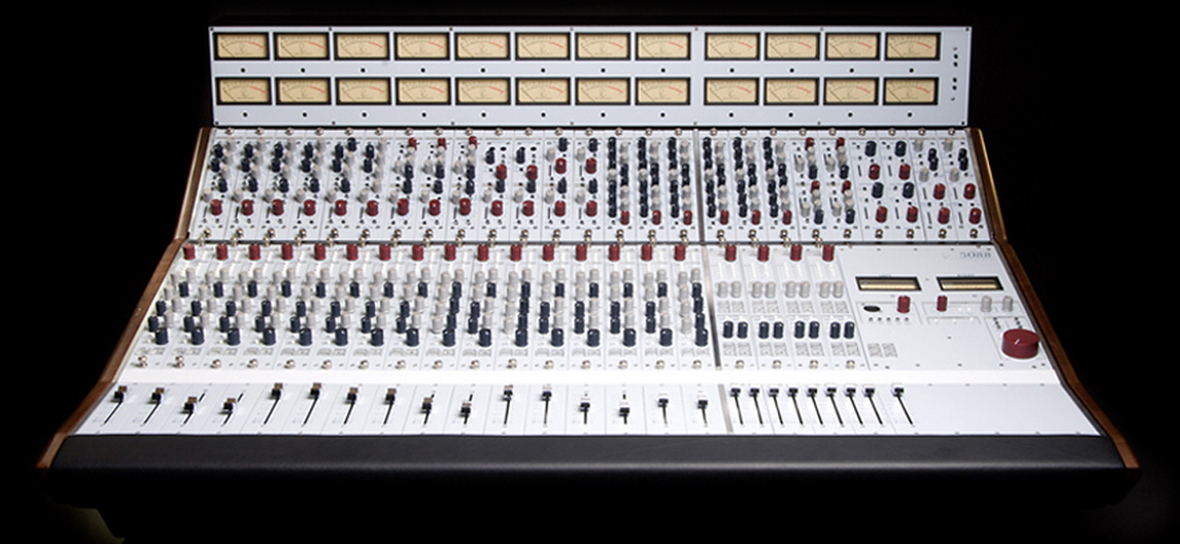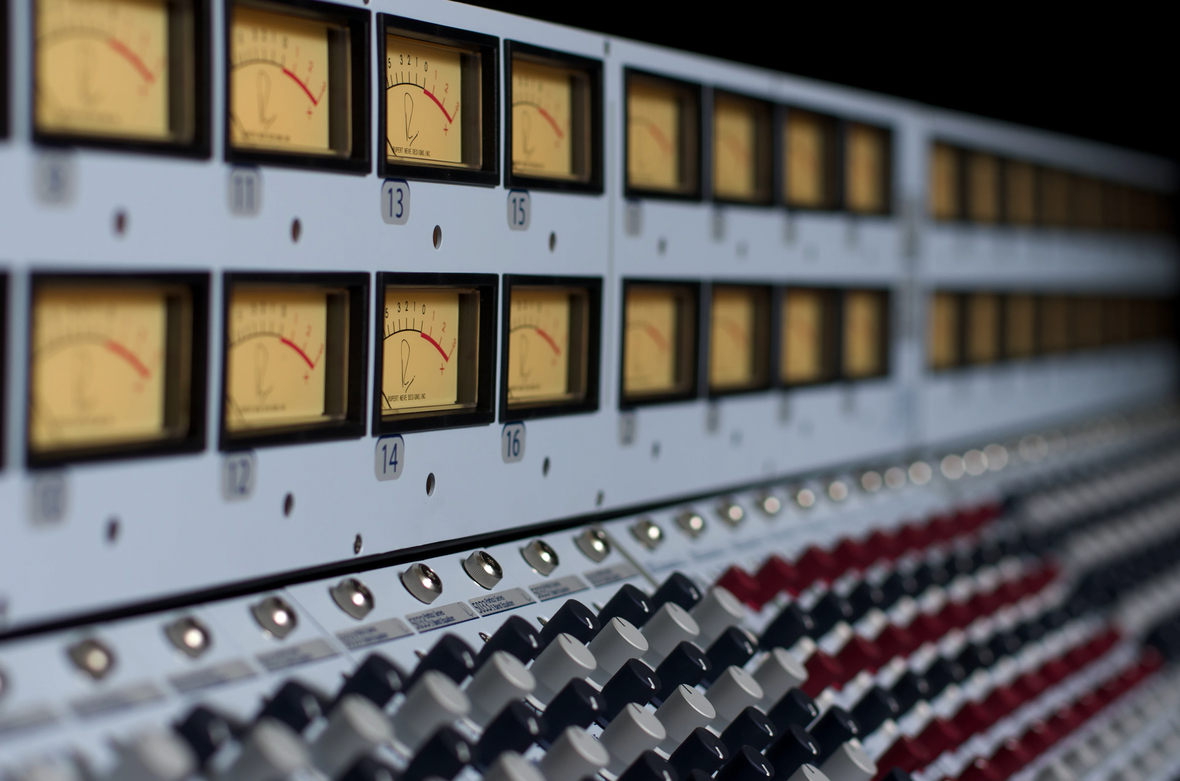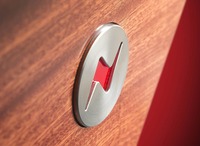
Review by George Shilling
At 80, Rupert Neve can look back proudly at a career of console design, his CV including numerous models which pushed the boundaries of audio quality and ergonomics. He founded the first Neve company in the early 1960s and has subsequently designed consoles under several different brand names. Many of his designs are held in high esteem, and still in use decades after their introduction.
Following the sale of the original Neve company to Siemens (now AMS-Neve) he formed Focusrite. But that company was short-lived; Phil Dudderidge acquired the operation and although console production never resumed, the new Focusrite company still markets Rupert Neve’s designs, along with new product. Neve (the man) then became involved with Amek, designing outboard and the spectacular 9098i console. But following the expiration of that arrangement, rather than retiring, he set up another new company, Rupert Neve Designs, with headquarters in his adopted home of Texas.
This company has, over the last two years, steadily introduced a range of high quality outboard designed by Neve, many with unusual, unique and useful features, in the shape of the Portico series. The provision of slightly mysterious Buss connectors on these units led to wide anticipation of this new console, which does indeed make use of the Portico series’ Buss system.
The 5088 continues the theme of the Portico units’ compact size, high audio quality and slightly unconventional feature sets and concepts. In fact it goes further than the Porticos, in that it is fully discrete. Resolution’s spiritual forebear Studio Sound honoured Neve as ‘Man Of The Century’ in 1999, and he is the recipient of a Technical Grammy. Honours continue to be bestowed on Neve with a 2006 TEC Award for the Portico 5042. Whilst others chase vintage reissue designs and suchlike, 15 years after official retirement age, Rupert Neve aims to improve on old analogue designs and bring something new and better in the shape of the RND Porticos and 5088.
I was recently given a private sneak preview of the 5088 console with Serial No. 0001 at Sonic Distribution’s West London demo studio. At that time, 14 consoles had been ordered and were being built and delivered. When encountering the fully modular 5088, its sheer quality of the build is immediately evident, with refined finishes, custom knobs designed by Neve himself, and a sense that things have been over-engineered to withstand daily use for many years. Lovely wooden end cheeks add a touch of class, and the leathery area below the faders is slightly padded for comfort. The off-white finish looks clean and elegant, although I’m not sure it would take long for finger grease and dust to cheapen the appearance with daily use. The machined aluminium knobs are beautiful, they feel expensively precision-engineered, with a slightly tapered shape and perfect damping. In typical Neve fashion these are finished in three colours to help visually identify their function.
The 5088 is a 16:8:2 console, 16 channels, 8 groups and a main stereo buss, but the channel count can be increased using 16 channel Expansion units. Input channels are just that – there is just one audio path per channel, with no microphone preamp or EQ, the idea being that these are added as necessary in the shape of appropriate Portico units. Metalwork is available to mount a 25 space Penthouse for locating Porticos (sideways) immediately above the 5088, at a pleasantly raked angle. Above that, one can optionally mount an ‘Upper Penthouse’ for a further row of up to 25 Porticos. (More on Portico integration later). Above either of these one can mount a smart VU Bridge housing illuminated meters for all input and group channels of the console, with LED meters optionally available, although all orders so far have been for VUs. These can be switched globally to show level pre or post fader, or indicate the level at the direct output of the channel.

Main stereo buss meters are included in the 5088 master section. But as well as expanding upwards, one can of course expand the 5088 and all those options just described in a sideways direction using one or more Expansion Chassis, which each add a further 16 slots of console channels (with the master section linked via ribbon cable), Penthouse or meter bridge. This modular approach to console building has the benefit of both customisation for particular scenarios, and also the possibility of future upgrades, with further channel Expansion units or Portico-packed (or empty!) Penthouses. Even with two Penthouses above the console, everything is within easy reach - in contrast to Neve’s previous design, the vast Amek 9098i. The 5088 itself is just 26” deep.
From an audio point of view, things to note from the off are the provision of custom transformers on every input and output (including inserts), with completely discrete Class A circuitry throughout. Notably, this is Neve’s first all-discrete console in 30 years! The power rails run at +/-45 volts, and thanks to that the 5088 has extraordinary headroom, and 10dB more dynamic range than any previous Neve-designed console. Despite the high voltages, the console seems to remain remarkably cool. The Power Supply is a rack mounted 4U unit. Each channel includes a small internal torroidal transformer to regulate power. Custom, high voltage and discrete op-amp cards have been designed especially for the 5088 that RND claim eliminate crossover distortion entirely.
Functionally, the console appears very simple to operate, although this is partly due to the lack of any internal provision for EQ or microphone preamp in the main channels cluttering the appearance! However, the layout is very clear and logical, and the legending and markings are excellent.
Let’s work down from the top of the Channel… There are three selectable Line sources at the top, labelled Tape, Line and Buss. Generally this would be set up with DAW outputs feeding the Tape inputs, external microphone preamps feeding the Line inputs, and Portico units connected to the Buss inputs via their proprietary connections – these are at different impedance from standard line connections. A knob allows +/-10dB trim, and there is a useful Phase Reverse button alongside. The eight Groups are accessed with individual routing buttons just below the input section, accompanied by a Stereo routing button for the main buss. Down at the bottom of the strip is a switchable Pan knob which varies left/right and odd/even in conventional style.
The configuration and operation of the eight Aux Sends are not as straightforward as they might have been, but instead aim to offer flexible options for different scenarios. They are configured with the numbers starting at the bottom near the pan, with each pair including a MUTE button. Auxes 1/2 and 3/4 offer similar features. These are set up as individual level controls, switchable to level/pan combos. There is also a useful and unusual Send Follows Pan (SFP) button for each pair, which obviously enables the main channel’s panpot to govern the stereo positioning – useful for quick can balances. And of course, each pair includes a PRE (-fade) button. Auxes 5/6 lack the PRE and SFC buttons but instead include an AUX TO GROUP button, which sends the signal post fader to the selected groups, enabling a further potential eight sends in a mixing scenario. Auxes 7/8 at the furthest from the operator are a simple dual mono pair with one PRE button. Channels’ Direct Outputs are optionally Pre or Post fader depending on circumstance or personal preference, but this option is selected with an internal jumper, so it is not an instant flip.
Main Channel, Aux and Group Master Solo and Mute buttons are tastefully legended large-ish Perspex-type latching buttons which illuminate – the numbered channel buttons illuminate when muted. Travel is shallow, but these are pleasant to use and have an elegant look and feel.

On the right of the 16 main channels are four dual Group modules. These each include a stereo Effects Input with a set of routing buttons, a +/-10dB Gain Trim, Mute and Solo buttons. Apart from their obvious use as returns from outboard processors, there is always the possibility of using these inputs for summing further signals from any stereo source, perhaps from a DAW. Below this section is a pair of Aux Send Masters with individual Level, Solo and Mute. Below those are the Group Master controls, with Insert buttons, direct separate routing to the Left and Right busses, Pan controls with enable buttons, and Solo and Mute buttons. Below those are separate faders corresponding to each Group. Group outputs are transformer coupled. By utilising the Insert return inputs and the Effects Inputs the 16 channel console can be stretched to accommodate an impressive 32 line inputs.
The Master section is as clean and elegantly laid-out as the rest of the console, dominated by the most enormous machined aluminium knob one is likely to see! This is, of course, for control room master level. At the top is a pair of full sized VUs for Stereo Buss level. A phantom powered Talkback microphone input XLR is mounted on the front, with Level and Routing to Auxes and/or Stereo Buss, while the actual Talkback button is situated nearer the operator in an easy to find spot. An Oscillator with selectable frequencies and a level control feeds a rear panel XLR and/or the Meters, but oddly (perhaps sensibly) it is not routable directly to the Groups. Monitoring Source is selected with six small relay-interconnected buttons where choices are Stereo Buss, Solo Buss (stereo), Aux 1/2 or any of three transformer-coupled External XLR input pairs from the rear. There are three Speaker select buttons labelled simply A, B and C – again these outputs are transformer-coupled. And adjacent to the Talkback button are a useful Stereo Buss Insert button which accesses XLR insert sockets on the rear, plus Monitor Mute and Dim buttons. On the recently shipped and unpacked demo console the Talkback button didn’t illuminate or Dim the monitors, but my host demonstrator believed that normally that would be the case!
There are some nice touches, such as the Solo buttons ability to flash red to indicate an overload. But other common functions are missing, such as Solo-Safe, non-destructive Solo or Fader Grouping – this is a fairly streamlined console, with the emphasis on audio quality. There is therefore no logic switching or recall. But two different automation systems are offered as options: Martinsound Flying Faders II (a new version of the system previously featured on AMS-Neve consoles) or the Tonelux ShadowMix, which utilizes DAW automation. The faders are excellent Penny & Giles components, and audio goes through the fader track; there are no VCAs. Group Faders are similar to Channel Faders, and there is a single stereo Master Fader with the zero point indicated at the top of its travel.
When Portico units arrived with Buss Outputs on their reverse, RND were cagey about their intended use. I plugged them in on one unit and they seemed enormously loud, due to their impedance. However, the Penthouse frame accommodates them easily, and the 5088 features dedicated connections for these. To incorporate existing Portico modules into the Penthouse frame one must acquire and fit a different coloured and vertically oriented faceplate, and knobs are replaced with similar machined aluminium ones to the console’s. A multiple output PSU is available (with cable management) for supplying the required 12V DC supply to multiple Portico units.
The rear of the console features XLRs for all analogue I/O connections; the meter bridge is connected with a ribbon cable. RND don’t build patchbays, so sourcing and installing this will need to be factored in for most situations, especially when a Penthouse is involved: all those Portico Buss connections will of course need accommodating.
The 5088 is really quite an extraordinary beast, and even at 80, Rupert Neve proves himself to be a maverick and expert console designer. The sonic architecture boasts specifications which outclass just about any other console design, whilst the Expansion units and Portico module mix and match approach provides exceptional flexibility of setup, especially when utilizing the latter’s clever bussing arrangements. A large configuration with such bells and whistles will be expensive. However, with this console, costs can be saved by only ordering as many microphone preamps, EQs etc. as are required - if any, rather than paying for features that may be redundant. Indeed, other microphone preamps integrate happily with the 5088, and with custom metalwork one could probably even incorporate these into a Penthouse. Alternatively, the 5088 could be thought of as a very expensive summing mixer, but with such devices one often then wishes for aux sends and the centre section features that the 5088 provides. Certainly it seems that this is another nail in the coffin for the large, all-encompassing analogue console. But however you look at it, this is desirable, high quality kit.
Pros: Emphasis on audio path quality, the best performing Neve design ever; Expandable and configurable beyond basic 16:8:2 mixer; Penthouse racks allow Porticos to slot in above the console; The ultimate summing mixer
Cons: No pan controls on Effects Return inputs; No recall; Expensive if you want a large configuration with Portico processing on every channel; Patchbay must be sourced elsewhere
Reproduced with kind permission from www.georgeshilling.com. Copyright ©



